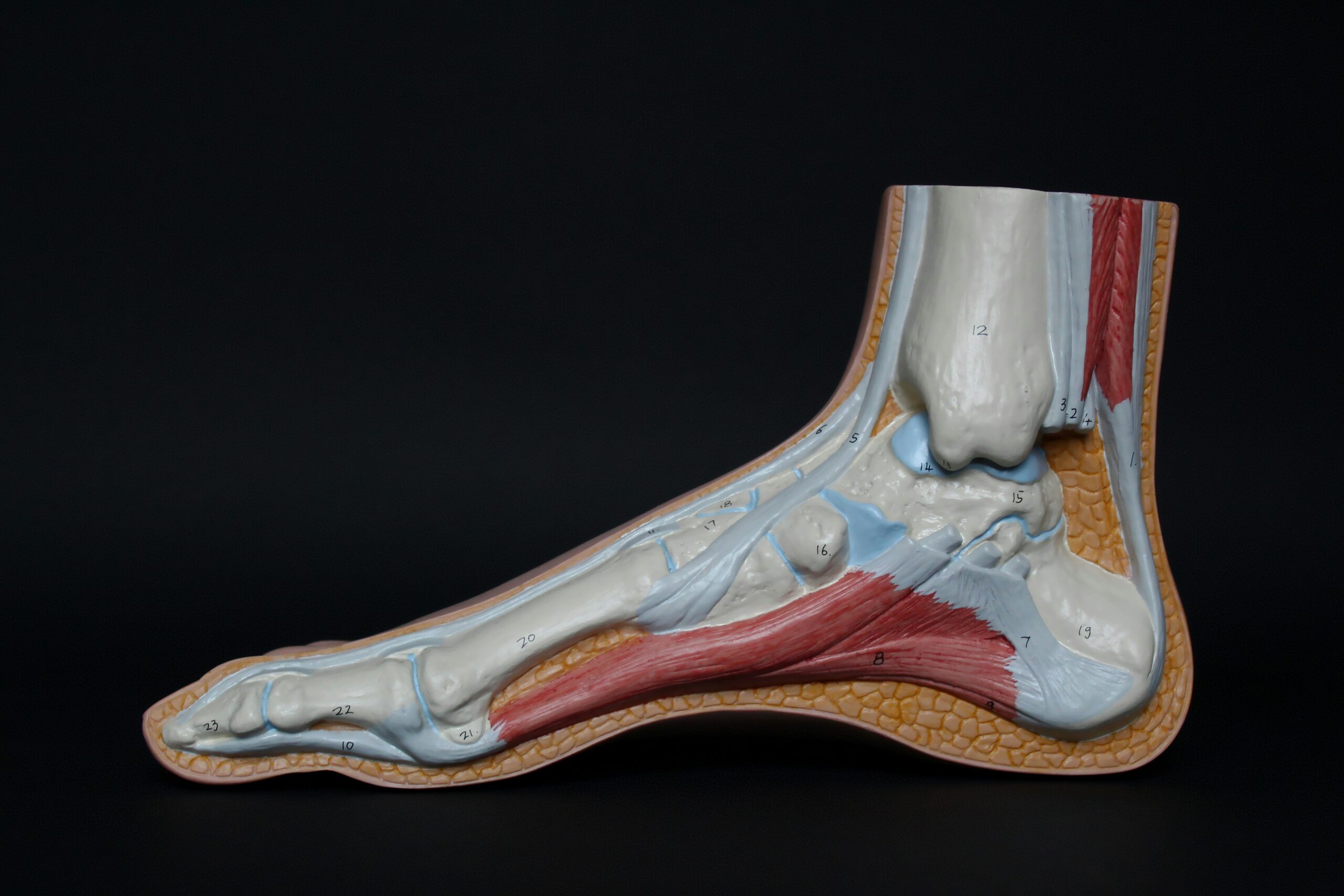Plantar heel pain, commonly known as plantar fasciitis, is a frequent issue for many people, especially those who are active or spend a lot of time on their feet.
This blog post aims to provide a clear understanding of this condition and how it can be managed effectively.
What is plantar fasciitis?
Plantar fasciitis involves the inflammation of the plantar fascia, a thick band of tissue that runs along the bottom of your foot, connecting your heel bone to your toes.
This condition is characterised by sharp pain in the heel, which is often worse with the first steps in the morning or after periods of rest.
Common causes:
- Overuse from repetitive activities
- Wearing improper footwear
- High body weight
- Spending long periods standing
Who is affected?
Plantar fasciitis typically affects individuals who are active or spend a lot of time on their feet.
It is common among runners, dancers, and people who work in occupations that require prolonged standing or walking.
The constant stress placed on the foot can lead to micro-tears in the plantar fascia, causing pain and inflammation.
Symptoms to look out for:
- Sharp pain in the heel, especially noticeable during the first steps after waking up or after sitting for a long time
- Pain that may lessen with activity but can return after prolonged standing or walking
- Stiffness or tightness in the foot
- Tenderness when pressing on the heel
Physiotherapy treatment for plantar fasciitis
Physiotherapy is essential for managing plantar fasciitis and preventing the condition from worsening.
Common treatments include:
- Exercise therapy: Stretching exercises for the plantar fascia and Achilles tendon, along with strengthening exercises for the foot muscles, can be very beneficial.
- Stretching and flexibility: Targeted stretching of the plantar fascia and calf muscles can help relieve strain on the tendon and improve flexibility.
- Taping and orthotics: Using orthotic devices and proper footwear can provide additional support and alleviate symptoms.
- Manual therapy: Techniques such as soft tissue massage and joint mobilisation can help reduce tension in the foot and improve function.
- Load management: Gradually increasing activity and properly managing training load can help prevent further injury.
Prevention tips for those at risk
- Warm up thoroughly before engaging in physical activities.
- Focus on strengthening key muscle groups like the calves and foot muscles.
- Avoid sudden increases in activity intensity or volume.
- Use proper footwear designed for your specific activities.
When to seek help
If you notice persistent heel pain that worsens with activity, it’s important to seek help from a physiotherapist.
Early intervention can prevent the condition from becoming chronic.
At our clinic, we offer a range of treatments to support your recovery and get you back to your daily activities with minimal discomfort.
Jack Pickering
Physiotherapist

